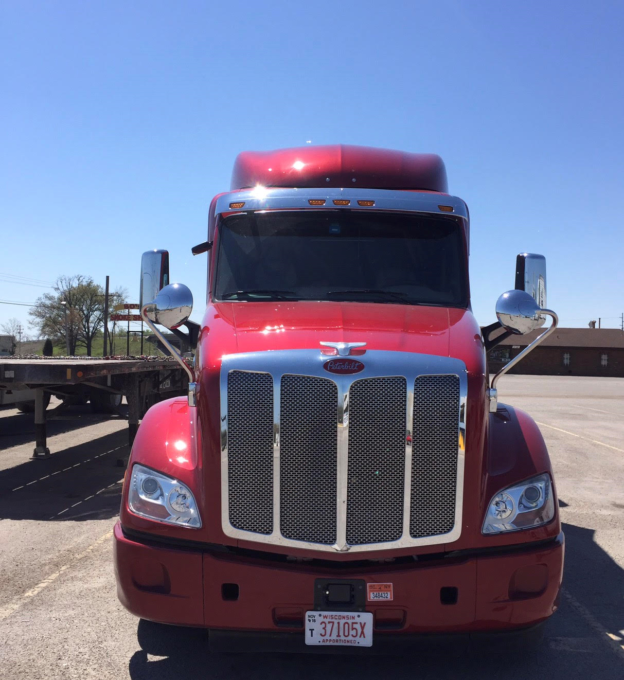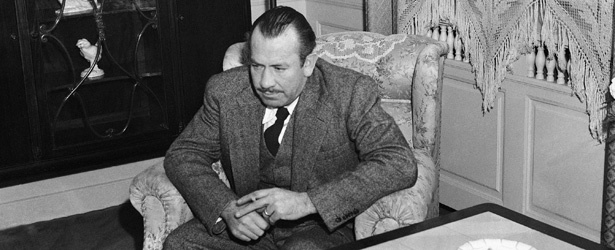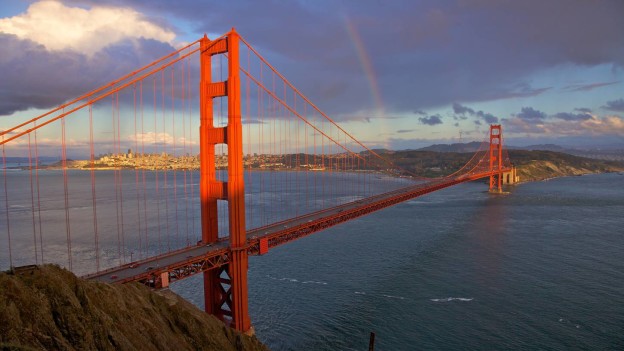Jon Sage
The
United States government, eager for westward expansion after the Revolutionary
War, sought to develop a series of public works projects which would facilitate
commerce in the outlying states and territories. The road’s namesake, Cumberland,
Maryland, situated just outside Washington, D.C., was chosen in large part because
of its strategic location and proximity to the nation’s capital. The area surrounding
Cumberland afforded natural defenses and, in the spirit of continued and
expanded national defenses, was also the home of military outposts.[1]
However,
a main impetus for The Cumberland Road was also economic, the aim being to
connect the eastern states with western territories and new states. As such,
with Cumberland being an area historically rich in commerce, the choice to
begin the roadway at this location was an easy choice.[2] The
Cumberland Road, stretching from Cumberland, Maryland into Ohio, would overcome
great financial and political obstacles to become the first federally mandated
interstate roadway, paving the way for industrial and economic expansion of the
United States.
A New Road West
The
need for a western reaching roadway, in the eyes of many, was undeniable, and
was not a new thought process, even still, standing in the way were the
Allegheny mountains, a formidable hurdle to overcome. The new American
government, realizing the task at hand, looked at Braddock’s Road, which had
been in existence since 1755. British General Edward Braddock had constructed
it for use in military campaigns, but the road had also become a hub of
economic activity.[3]
In time, Braddock’s Road fell into disrepair, but parts of it remained as
important routes of travel. Accordingly, when talk arose of building a new
route that could sustain and promote economic development of the United States,
engineers, and politicians both looked at the successes which had been enjoyed by
those using Braddock’s Road.[4]
Although
a need and a desire for a westward interstate roadway was evident, the means to
accomplish this task were not as clear, and issues such as the way individual
and state’s rights could be affected by federal mandates challenged those who
cited the United States Constitution as providing rights for the construction
of a roadway. At the core of these arguments, was the question of states that
would not play host to a roadway still being expected to provide financial
support for its construction and maintenance, and this debate would continue
well into the early to mid-1800s. Those in
Congress who were in favor of the roadway looked towards the Federalist papers
for backing. In Federalist 42, James Madison had written when establishing roadways,
that “Nothing, which tends to facilitate the intercourse between the states,
can be deemed unworthy of the public care.”[5]
Foundations
for federal spending on interstate infrastructure was also present in the
United States Constitution. Article I, Section 8, Clause 7 contained language
authorizing the government to construct “Post Offices and Post Roads” as well
as giving authority to the federal government in Article I, Section 8, Clause 3
to regulate commerce “among the several states.”[6] Along this line of
thought, and with the increasing population of the western territories, in
particularly that of the Ohio, Congress drafted a Statute on April 30, 1803,
which would allow Ohio to apply for Statehood, provided that “one-twentieth of
the net proceeds of the lands lying within said State sold by Congress shall be
applied to the laying out and making public roads leading from the navigable
waters emptying into the Atlantic, to the Ohio, to said State, and through the
same, such roads to be laid out under the authority of Congress, with the
consent of the several states through which the road shall pass.”[7]
Still,
even federalists such as Jefferson foresaw a greater good in limited but
capable powers that could be wielded by the federal government. John Larson’s
monograph, Internal Improvement: National Public Works and the Promise of Popular
Government in the Early United States, demonstrated in a very clear way how
the federal government of Thomas Jefferson and his predecessors envisioned a
growing country. Larson describes how westward expansion was necessary and
would ultimately help to “foster improvement in the conditions of life.”[8] In this vein of thought,
those who had written the Constitution did everything in the power to cede
enough control into the hands of the newly formed federal government,
empowering the President and Congress to lay out interstate roadways across the
several states and territories. The Founding Fathers were heavily influenced by
the notion of capitalism, and a champion of that movement was Adam Smith. In
1776, Smith published the Inquiry into
the Nature and Causes of the Wealth of Nations which set the tone for the
architecture of the economic climate in the early United States. Jefferson and
his counterparts were in agreement with the thoughts laid out by Smith which
included an economy that would be comprised of “sprawling intersection of
money, markets, people, and policies.”[9] In order for this to occur, the westward lying
lands and territories would have to be utilized for the sake of a national
economy. However, one major difference between the world in which Smith wrote
in and that the Founders had created was that the young United States was not a
monarchy, or even a small alliance of confederations. The United States
consisted of, at times, fiercely independent States. It is noteworthy to
capitalize the States, as that is the way in which they were viewed. At the
time following the revolution, there could be no question that individual and
States’ rights were to be protected from an intrusive federal government.
This
sentiment was present in the Congressional debates before, during, and after
the construction of the road. One point which was continually raised was the
power of the federal government to construct the road, and then, how it should
be paid for and maintained. In this discussion, Ohio is used as an example
because it was one of the first states affected by the road. However, in the initial discussions and arguments of
Constitutional powers, Ohio, and her entrance into the Union, provides a good
working example of the national conversation writ large on the matter.
The
United States Constitution provided broad powers to the federal government that
the previous confederation did not afford.[10]
Namely, the power to regulate interstate commerce and the development of Post
Office Roads would be key in building interstate roads. Ohio’s application for
Statehood in 1802 coincided with certain aspects of this interstate development
to the federal government.[11]
As an example, in the interest of an expanded and strengthened confederacy,
federal appropriations offered should be accepted by the state for the purpose
of “opening and repairing roads within the State of Ohio”.[12]
Enacted into law into 1787, this demonstrates a desire to drive national growth
long before any federally mandated roadway construction had begun.[13]
Still,
in many ways, the young country in its quest for expansion was echoing a theme
of imperialism from which it had just escaped. At the time of the expedition of
Lewis and Clark, the territories and lands west of the Alleghenies were little
more than scarce outposts of civilization. In the time leading up to and even
after the construction of The Cumberland Road, many described the experience of
crossing the Alleghenies as “going into” or “coming out of”, as opposed to
arriving at a destination.[14] The road was intended to
provide a means of stabilizing the social and economic fabric of the United
States. In this way, the intended route of the roadway, which strung from
Cumberland to Wheeling, was in line with what was hoped to be further
expansion. With Cumberland’s importance already discussed, it is helpful to
know that engineers appointed by Congress determined the route for a variety of
reasons.[15]
In their report, it is said that “Wheeling provided the “best navigation of the
Ohio river during any season, for crossing by ferry or otherwise. Wheeling also
lay in line with outposts further inland, such as Vincennes.”[16]
This attention to what lay in the future helped to determine the route of The
Cumberland Road as well as build the infrastructure of a growing nation.
The
American Revolution was incredibly ambitious. However, the outcome of the
American victory over Britain was shown to have mixed results. Alan Taylor, in Expand
or Die: The Revolution’s New Empire posed the question of “how
revolutionary the revolution truly was?”[17] In other words, the North American British
Colonies had been liberated from rule by the monarchy. However, the new
American citizen was still deeply ingrained in what had been a previous way of
life. First and foremost, in importance to the American populace was the notion
of personal property, wealth, and future prosperity. In order for this
realization to occur, the thought of acquiring (or conquering), new lands that
lay to the west, was not of paramount importance. Conversely, the newly formed
federal government, which had already acquired new the Northwest Territories in
1802, and Louisiana Purchase in 1803;
saw vast resources which could help to build the small and newly independent
country into a strong force to be reckoned with.[18] Still, for all the war
had produced in terms of prosperity potential, there remained “geographic
bounds, temporal range, human cast”, and other “consequences of the revolution.”[19] The question would be,
how to get the country to want to move west?
The
answer of how and why to move westward came in the form of economic motivation.
Of the many good things produced by the Revolution, one of the more sinister
remnants was the debt of the war, which had been spread across the 13 states.
In short, the federal government would push for a means to strengthen domestic
as well as foreign trade, all of it to bolster the United States economy; to
pay back the war debt; and to allow the country to enter an era of prosperity. Drew
R. McCoy pointed out the benefits in The Elusive Republic that westward
expansion could provide. Some of the positive aspects to be gained were
acreages that could foster “productive farms,” which would create an
“agricultural surplus that needed ever-larger overseas markets”; in turn, this
would lead to a growth in foreign trade markets “facilitated by an aggressive
free-trade policy.”[20] Thomas Jefferson, along
with many of the other founders felt that westward expansion was necessary and
would ultimately help to “foster improvement in the conditions of life.”[21]
In
order to accomplish this expansionist vision, it was necessary to create a
legal means of annexing; or adding to, the original 13 states. The
aforementioned Louisiana Purchase was a start, though its timing was considered
by many to political maneuvering which would serve to protect the United States
from foreign threats after the Revolution. Still, the newly acquired territory,
and those which lay beyond, would need to be equipped to support the trade that
was expected to follow. In this way, the federal government devised plans for
newly admitted states to cede partials of land for road development.[22] In return, the federal
government could wrest control over not only the new states, but also of the
trade routes constructed. In turn, the outlying areas could fulfill the vision
of economic wealth needed to grow the county.
The
Cumberland Road was put into law by and Act of Congress on March 29, 1806. In
Legislation introduced and passed by the ninth Congress, the President of the
United States was authorized to appoint persons “to lay out a road from
Cumberland, or a north point on the bank of the river Potomac in the state of
Maryland,” with it continuing westward until said road reached “the state of
Ohio.”[23] This roadway construction
would become the key driver in not only connecting the new states to the
eastern seaboard, but also in driving what would become a truly national
economy. One of the most important reasons in connecting east to west was that
prior to The Cumberland Road, the majority of commerce in the western
territories was ferried down the Ohio and Mississippi Rivers to the port of New
Orleans. With much of this land heavily influenced by the French and Native
Americans, it was exceedingly difficult for the United States government to
fully realize the profitable trade occurring. After the war of 1812, this
changed somewhat; even still, a road linking the several states was important
for national defense and unity as well as economic progress.
As
late as 1815, travel to the interior of the country “was an improvisational
affair”, with many having to find their own way via a poorly marked and often
neglected collection of makeshift trails.[24] Bridges, as a rule, were
unheard of, and this often meant if waters were high, making fording a stream
or river impossible, then travel was delayed or detoured by considerable
distances. The mention of rivers and waterways for travel and freight should not
go without mention. Still, though water transport– by sea or river, “was almost
always preferred, overland travel could not be avoided where there were no
rivers heading in the right direction”, and this would not be alleviated until
the widespread construction of canals in the 1820s-1830s.[25] For this reason, as well
as the promise of economic and national growth, the construction of an inland
roadway was evinced.
With
a need for overland travel firmly established, the federal government went
about setting it into motion. The first steps, mentioned prior in the
applications for statehood by the state of Ohio, set about a legal means for
the roadway construction. Yet, the question remained not only how to pay for
the construction of the road; but perhaps more importantly, how should the
roadway maintenance be funded. This was a key element in the overall discussion
of The Cumberland Road, and the same arguments appear in public discourse in
the present day. If the roadway was to be built per taxation and/or monies from
the several states; the citizenry who paid for the road would expect an equally
viable and acceptable plan of action to keep and maintain the roadway for
future use.
The discussion of methodologies in
maintenance references previous roadways such as the Washington and Braddock
Roads, which, until they fell into disrepair, had been viable arteries for commerce
and travel. As an example, the Braddock Road, laid out in 1755, was for many
years the preferred route from Washington to Pittsburgh. It was eventually
replaced by The Cumberland Road, in large part because of a failing in the
trail, brought on by years of neglect and lack of needed repair.[26] In this light, the
taxpayers who would foot the bill for a new public roadway demanded to know
that those tax dollars spent would result in a lasting road, properly
maintained, for years to come.
The road, originally funded by the
federal government, had little in the way of long-term functions that would a
means to support maintenance. Long term maintenance plans were considered, but
not implemented until around 1824, when severe disrepair began to appear. At
that time, Congress introduced legislation allowing tollbooths to be erected,
with dollars going to the federal government, which would then administer and
pay for maintenance in the several states. This was vetoed by President Monroe
in 1825. The main reasoning for this was that even though a federal roadway
passed across state lines, the states claimed sovereignty inasmuch that the
land being used by the federal government for the roadway was still the
property of the states.[27] A second reason was
referenced again in 1836, when funding for the continuation of the road into
Indiana and Illinois was discussed. Senators expressed some dismay at the
original agreements, such as that legislated for the initial Ohio portion of
the road. An argument at the onset of construction had to do with carriages
that carried the U.S. Mail, thus making the roadway a Post Road.[28] This notion was one that
helped in the initial and subsequent funding of the road, though eventually
faltered when considering federal involvement in the maintenance of the
roadway. Mr. Tipton, debating in the Senate said, “that the Cumberland road was
the great leading mail route to the far West.”[29]
However,
when maintenance of the road became an issue, Congress was less inclined to collect
federal dollars for use of what amounted areas sovereign to the state. In “the
closing paragraph of the 2d section of the act of 1831, above cited, it is
provided, ‘that no toll shall be received or collected for the passage of any
wagon or carriage laden with the property of the United States, or any cannon
or military stores belonging to the United States, or to any of the states
composing this union.’ In addition to this, there were certain limitations
imposed, as to the amounts of tolls, on the state of Pennsylvania, which need
not now be considered.”[30]Hence,
for tolls collected to be directed back to the federal government in the
maintenance of state property was not widely accepted. In fact, the notion was
rejected flatly.
The solution came from the 1830s through
the middle of the 19th century as the federal government
relinquished ownership of the sections of The Cumberland Road back to the
states where it passed; thus allowing the individual states to administer their
own taxation and tolls collection programs in the maintaining of the roadways. However,
this did not occur without much debate and dealings struck in Congress. Advocates
of state’s rights, such as Kentucky Senator Henry Clay, argued that lesser
amounts should be allocated to the National Road, even though its construction
would ultimately benefit Kentuckians and neighbors to the south in Tennessee.
His reasoning was recorded in the February 26, edition of The Congressional Globe in 1836, during the time that the National Road was being extended across Ohio and into Indiana and eventually Illinois. Clay was concerned on two fronts, firstly that a roadway from Maysville Kentucky, which would eventually connect to the Cumberland Road, had been originally allocated with federal dollars, had been completed with funding from the coffers of the Commonwealth of Kentucky. Mr. Clay then moved to strike massive amounts from appropriations earmarked for Ohio and Indiana. However, Clay’s intent was not to kill the road bill. Rather, he reasoned that less federal dollars would lengthen the time allotted for construction, effectively providing indirect stimulus and revenue to Kentucky and her industry involved in that construction.[31] Similar examples of Congressmen placing the interests of their home states in line with federal interests were found in Pennsylvania’s system of federal appropriations, coupled with tolls, to provide for road maintenance and management.[32]
After examining the many factors
that preceded and succeeded the inception of The Cumberland Road, it is helpful
to understand how the road served the people which traveled over it. The
Legislation authorizing the roadway was enacted in 1803, and some construction
began in 1806. However, the road did not truly begin moving westward from
Maryland until 1811, and finally reached Wheeling in 1818. The techniques used
for building the roadway had been adapted from similar applications in Europe.
In short, the construction consisted of a “right-of-way 66ft.” which
accommodated a 20-foot-wide roadway. A base layer of 18 inches of stone filled
the roadbed. The surface was a macadamia surface, providing a smooth and easily
drained surface, which was tapered from 18 inches at the center to 12 inches at
either edge. Additionally, drainage culverts were cleared to provide proper
channels for rain and floodwater to be routed off the surface.[33] . cleared and the roadway
was 20ft. wide covered with 18in. of crushed stone at the center, tapering to
12in. at the edges.
Along the road, small towns and
taverns sprang up at regular intervals. The model of the modern tavern was
inextricably linked to The Cumberland Road. Prior to the late 1700s, and
especially on the east coast, taverns were primarily places to drink and eat.
Many if not most of them closed in the early hours of the evening; and few, if
any, offered or advertised overnight lodging. With the new travelers on the
Braddock, and then The Cumberland Road, taverns became places of lodging for
those moving about.[34] This served to promote
not only the economic expansion of the westward territories and states, but
also provided a boon for the countless locales dotting the new route.
As more people moved west, a new
version of Americanism began to take shape. In the outlying areas, often
inhabited by Native Americans and peoples of different nationalities, the
Americans from the eastern states set about taking up new customs, patterns in
speech, and even different political and socioeconomic views on life. In a very
real way, travel along The Cumberland Road expedited the process of a cultural
shift. Travelers were “leaving familiar worlds behind, seeking new forms of
wealth, status,” and forming new and different bonds of kinship.[35] New branches sprang from
old family trees, and Americans, for possibly the first time, had a freedom to
explore the new world. In this way, The Cumberland Road provided pathways west
that fostered new markets for commerce while building a vibrant social fabric.
As settlers streamed through Pennsylvania, Ohio, and eventually into Indiana
and Illinois in later years, the regional cultures of the United States were
formed.
Industry, which had previously been
limited to cities such as New York, Philadelphia, and Boston; gave way to new
centers of commerce like Pittsburgh and Steubenville, Ohio. As the country
moved into the mid-19th century, rail traffic would coincide with the roadways
built in the west, forming the rustbelt, coal producing regions, and other
areas of production that would fuel the United States into the industrial
revolution that would define the late 19th and early 20th
centuries. This sentiment was echoed in the 1836 Senate debates, when talk
arose of allocation devices needed to keep The Cumberland Road in operable
condition. Mr. Buchanan stated “The Cumberland Road had afforded its purpose,
one of growing and then stabilizing the new Republic. He re-iterated a previous
comment that no matter how original funding was appropriated, there could be no
talk of ending the building of the road through Indiana and Illinois, citing a
matter of public welfare and defense. “Had it not been for this system, what
would have been the situation of the States? Would they have been able to have
afforded protection, and would the people have felt that security and composure
which they did?”[36]
The Cumberland Road, which started
as an answer and addition to the Braddock Road, successfully linked the eastern
and western states in the post-revolutionary United States. While this paper
has shown that federal powers used Constitutionally provided mechanisms in
order to construct the roadway, there was also a need for states’ rights, and a
constraint on federal taxation and spending. Even still, The Cumberland Road,
which now resides alongside modern day interstate highways, was a forerunner in
developing the social fabric and economic stability of the United States.[37] Without the foresight of
those from George Washington, General Braddock, Thomas Jefferson, and others, there
might not have been such a road. Perhaps more importantly, the insight of those
who sought refunding and a restructuring of the expenses of the roadway,
wresting control of it from the federal government and into the hand of the
states, helped in keeping the vision of the Revolution. Individual liberties were
protected from an over-reaching central government, while the growth of a
nation was pushed forward.
References
Primary:
“The Congressional Globe.”
A century of lawmaking for a new nation: U.S. congressional documents and
debates, 1774 – 1875. Library of Congress, March 2022.
https://memory.loc.gov/cgi-bin/ampage?collId=llcg&fileName=111%2Fllcg111.db&recNum=255.
“The Constitution of the
United States: A Transcription.” National Archives and Records Administration.
National Archives and Records Administration, October 2021.
https://www.archives.gov/founding-docs/constitution-transcript.
An
act to enable the People of the Eastern division of the territory Northwest of
the river Ohio to form a Constitution and State Government,
7th Congress, 1st Session, 2 Stat. 173 Chapter 40, Record Group 11, April 30,
1802. Accessed 4/4/2020 https://www.archives.gov/files/legislative/images/enabling-act.jpg
An
Act to regulate the laying out and making a road from Cumberland, in the state
of Maryland, to the state of Ohio, 9th Congress, Session
I, Statute I, Chapter XIX (1806): 357-359.
Article,
INDEPENDENT CHRONICLE, Boston, April 4, 1816.
Cumberland
Road. Gales and Seaton’s Register of Debates in Congress. Washington:
Gales and Seaton, 1836.
Hamilton,
Alexander, Madison, James, and Jay, John. The Federalist Papers. New
Haven: Yale University Press, 2009.
National
Archives. Accessed 4/4/2020. https://www.archives.gov/legislative/features/ohio-statehood
State
Of Ohio, 7th Congress, Session II, No. 161,
(1803): 340-341. Accessed 3/29/2020 http://memory.loc.gov/cgi-bin/ampage?collId=llsp&fileName=037/llsp037.db&recNum=347
United
States Statutes at Large, Vol. ii.
Secondary:
Beck,
Peter. “The Parts We Skip: A Taxonomy Of Constitutional Irrelevancy.”
Constitutional Commentary 34, no. 2 (2019): 223-262.
Bergmann,
William H. The American National State and the Early West. New York:
Cambridge University Press, 2012.
Hulbert,
Archer. The Cumberland Road. Cleveland: The Arthur H. Clark Company, 1904.
Accessed 3/29/20 https://babel.hathitrust.org/cgi/pt?id=mdp.39015021099331&view=1up&seq=9
Larson,
John Lauritz. “An Inquiry into the Nature and Causes of the Wealth of
Nations.” Journal of the Early Republic 35, no. 1 (Philadelphia:
University of Pennsylvania Press 2015): 1-23.
Larson,
John Lauritz. Internal improvement: national public works and the promise of
popular government in the early United States. The University of North
Carolina Press, 2002.
Longfellow,
Rickie. “Back in Time, The National Road.”Library of Congress.
EBSOHost, ASU Library, Federal Highway Administration.
https://www.fhwa.dot.gov/infrastructure/back0103.cfm
Mackintosh,
Will. ““Ticketed Through”: The Commodification of Travel in the Nineteenth
Century.” Journal of the Early Republic 32, no. 1 (Philadelphia:
University of Pennsylvania Press 2012): 61-89.
Taylor, Alan. “Introduction: Expand or Die: The
Revolution’s New Empire.” The William and Mary Quarterly 74, no. 4
(Williamsburg: Omohundro Institute of Early American History and Culture,
2017): 599-614.
Taylor, Alan. “The American
National State and the Early West (Book Review).” Journal of the Early
Republic 33, no. 4 (2013): 776-79.
The History Magazine, accessed March
28, 2020, http://www.history-magazine.com/natroad.html
Truett,
Samuel. “Settler Colonialism and the Borderlands of Early America.” The
William and Mary Quarterly 76, no. 3 (2019): 435-42.
[1]
John Kennedy
Lacock, “Braddock Road,” The Pennsylvania Magazine of History and
Biography 38, no. 1 (1914): 9-10.
[2] Archer Hulbert, The
Cumberland Road (Cleveland: The Arthur H. Clark Company, 1904), 32-33.
[3] Lacock, 2-3.
[4] Hulbert, 17-18.
[5] Alexander,
Hamilton, James Madison, and John Jay, The Federalist Papers (New Haven:
Yale University Press, 2009), 219.
[6] “The Constitution
of the United States: A Transcription,” National Archives and Records
Administration (National Archives and Records Administration, October 2021).
[7] United States
Statutes at Large, Vol. ii, 173.
[8] John Lauritz
Larson, Internal Improvement: National Public Works and the Promise of Popular
Government in the Early United States, (Chapel Hill: The University of
North Carolina Press, 2002): 16.
[9] Larson, 2-3.
[10] The Constitution
of the United States, Article 1, Section 8, clause 1, 7.
[11] An act to
enable the People of the Eastern division of the territory Northwest of the
river Ohio to form a Constitution and State Government, 7th Congress, 1st
Session, 2 Stat. 173 Chapter 40, Record Group 11, April 30, 1802.
[12] State Of Ohio,
7th Congress, Session II, No. 161, (1803): 340-341.
[13] State Of Ohio,
7th Congress, Session II, No. 161, (1803): 340-341.
[14] Hulbert, 17.
[15] An Act to
regulate the laying out and making a road from Cumberland, in the state of
Maryland, to the state of Ohio, 9th Congress, Session I, Statute I, Chapter
XIX (1806): 357-359.
[16] Hulbert, 39-40.
[17] Alan Taylor,
“Introduction: Expand or Die: The Revolution’s New Empire,” The
William and Mary Quarterly 74, no. 4 (Williamsburg: Omohundro Institute of
Early American History and Culture, 2017): 602.
[18] An act to
enable the People of the Eastern division of the territory Northwest of the
river Ohio to form a Constitution and State Government, 7th Congress, 1st
Session, 2 Stat. 173 Chapter 40, Record Group 11, April 30, 1802.
[19] Taylor, 600.
[20] Taylor, 605.
[21] Larson, 16.
[22] Hulbert, 18.
[23] An Act to
regulate the laying out and making a road from Cumberland, in the state of
Maryland, to the state of Ohio, 9th Congress, Session I, Statute I, Chapter
XIX (1806): 357-358.
[24] Will Mackintosh,
““Ticketed Through”: The Commodification of Travel in the Nineteenth
Century,” Journal of the Early Republic 32, no. 1 (Philadelphia:
University of Pennsylvania Press 2012): 61.
[25] The History
Magazine, accessed March 28, 2020, http://www.history-magazine.com/natroad.html
[26] Hulbert, 17-18.
[27] Hulbert, 91-95.
[28] The Constitution
of the United States, Article 1, Section 8, clause 7.
[29] On the bill
making an appropriation for the completion of the Cumberland Road in the States
of Ohio, Indiana, Illinois, and Missouri, Debate In The Senate, The
Congressional Globe, February 26, 1836.
[30] On the bill
making an appropriation for the completion of the Cumberland Road in the States
of Ohio, Indiana, Illinois, and Missouri, Debate In The Senate, The
Congressional Globe, February 26, 1836.
[31] “The
Congressional Globe,” A century of lawmaking for a new nation: U.S.
congressional documents and debates, 1774 – 1875 (Library of Congress, March
2022), 208.
[32] On the bill making an appropriation for the completion
of the Cumberland Road in the States of Ohio, Indiana, Illinois, and Missouri, Debate
In The Senate, The Congressional Globe, February 26, 1836.
[33] The History
Magazine, accessed March 28, 2020, http://www.history-magazine.com/natroad.html
[34] Hulbert, 152-153.
[35] Samuel Truett,
“Settler Colonialism and the Borderlands of Early America,” The
William and Mary Quarterly 76, no. 3 (2019): 437.
[36] Cumberland Road, Gales
and Seaton’s Register of Debates in Congress (Washington: Gales and Seaton,
1836) 4638.
[37] Rickie
Longfellow, “Back in Time, The National Road,”Library of Congress,
EBSOHost, ASU Library, Federal Highway Administration-
https://www.fhwa.dot.gov/infrastructure/back0103.cfm








